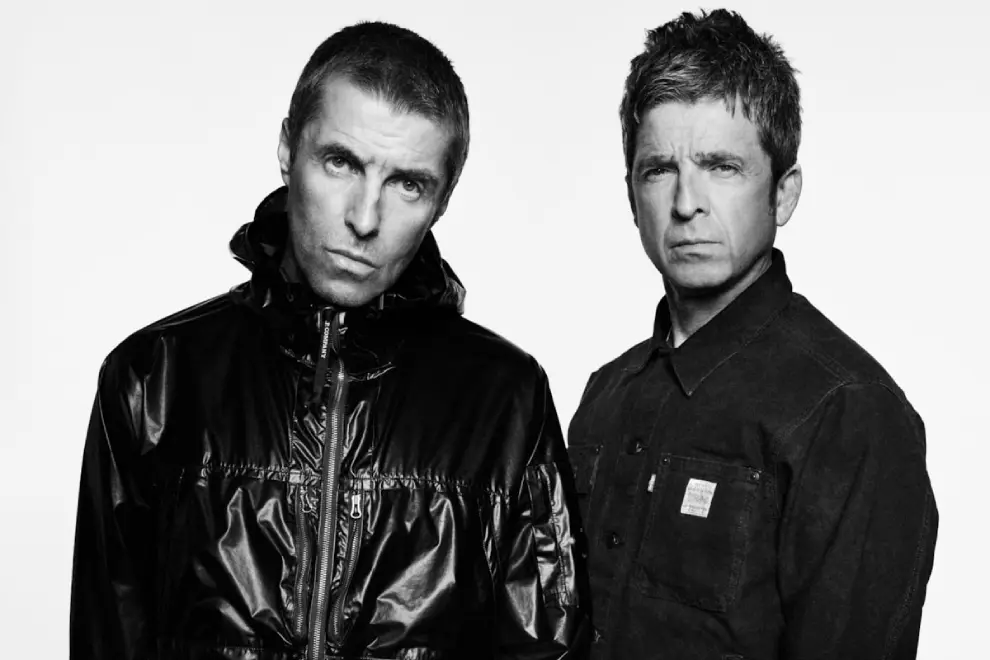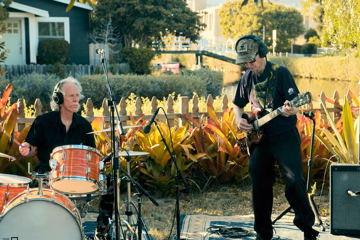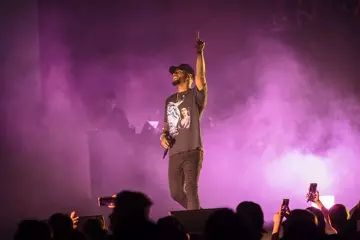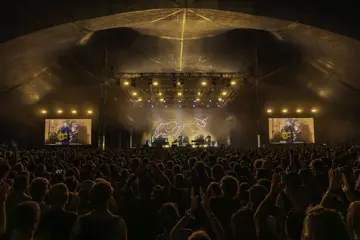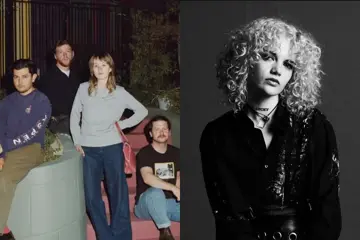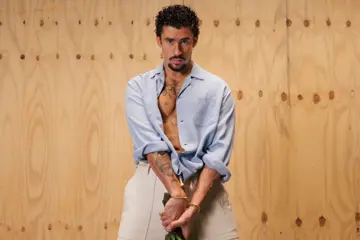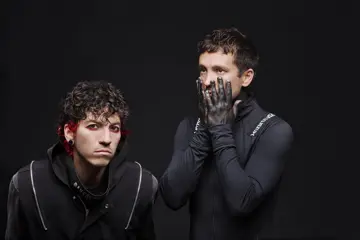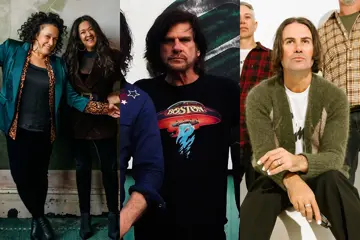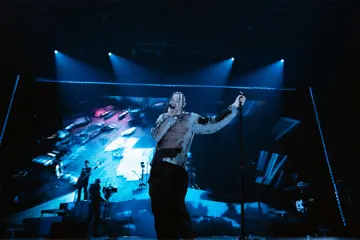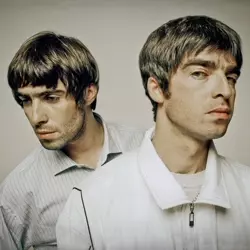 Oasis
OasisAs Oasis kicked off their world tour with two shows in Cardiff, Wales to 150,000, bars in the town’s centre sold £7,000 (AU$14,400) of beer on average.
In other words, 810,000 pints pulled over the 48 hours, according to trade body UK Hospitality, and adding to the £4 million ($8.24 million) made by businesses in the city.
Some staff in some bars had to pull 12-hour shifts, fuelled on coffee and pizza.
Getting a great benefit was the Zerodegrees Microbrewery, on account it was situated right opposite the Principality Stadium where the shows were.
Its Assistant Manager, Tia Brooks, told the BBC that sales "quadrupled" and the venue made £11,500 ($23,705) on the night of the first show. "Most weekends we are not as busy but this was the biggest event of the year so far for us," she said.
They managed to increase capacity to its fullest, “probably increased by at least 150 people."
Also talking to the BBC, Tom Hughes of O’Neill’s revealed his bar made “more than double” what it turns over on a weekend, and that given the tough times bars are undergoing, it was "good for our morale".
He went on to say, "Everyone was singing every word to every song. The energy was incredible the place was packed.”
Billion Dollar Riff
Altogether Oasis have sold 1.38 million tickets for their July to September in Britain, and estimated to generate £1.06 billion ($2.18 billion) into the UK economy.
The seven-night residency at London’s Wembley Stadium is to a total of 630,000. Novuna Personal Finance estimates that each of the nights will generate £60.9 million ($125.5 million) in transport, hotel and retail spending.
Food and drink and ticket sales are forecast at £100 million ($206.1 million) and £99 million ($204 million) each.
Don't miss a beat with our FREE daily newsletter
Now that the tour has started to glowing reviews from fans, media and the band, 24% of ticket holders have confessed they’d spent more on better views or VIP packages to get a better experience.
Theresa Lindsay, Chief Marketing Officer at Novuna Personal Finance, commented: “The Oasis reunion is more than a once-in-a-generation music event – it’s a serious economic opportunity.
“With nearly 60% of spending staying in local communities, this tour is set to deliver a powerful and lasting boost to high streets, hospitality, and tourism across the UK.”
Another forecast from Barclay suggested Oasis fans would spend more than the £997 million (over $2 billion) British Taylor Swift followers had last year.
Having paid an average of £171.10 ($352.70) on tickets, they were planning to spend £170 ($350) for accommodation and travel, £59.70 ($123) for official merchandise and £75.20 ($155) on pre-concert food and drinks.
Liam and Noel Gallagher are expected to pocket £50 million ($103 million) each from the 41 sold out shows by the time it ends next year.
Their manager Alec McKinlay admits that the band always knew the reunion would spark in Britain and Europe. But the response from Australia, the US and South America took them by surprise.
"We were quite cautious about what that would mean when it came to people actually buying tickets but we were just bowled over by how huge it was.”
It’ll be interesting to see what sort of economic numbers come up in Australia for Manchester’s finest.
Their three Melbourne and two Sydney stadium shows in November sold out their 270,000 allocations within the first 36 hours. Thousands of VIP tickets went for $800.
In July, promoter Live Nation released “a very limited number of additional tickets” when Oasis’ production crew checked the sites.
Aussie Economics
Until recently, it was difficult to find out how much an international tour was injecting into local and state economies.
As one top-end promoter chuckled to The Music, “We promoters are only focussed on a tour’s economic impact on our company’s bank balance!”
That information is most likely to come from levels of government who are increasingly using live music to soup up tourism numbers, and want to assure taxpayers their money is being put to healthy use.
One of the best examples so far is Coldplay getting an $8 million subsidy to play two stadium shows to 120,000 in late November 2023 and slamming $43.3 million into the WA economy, according to a Government report.
Over 40,000 of the crowd came from the East Coast (these dates were also marketed in Southeast Asia and New Zealand) staying on to holiday. A substantial chunk had never been to WA before.
Another example was South Australia giving promoter Secret Sounds $2.3 million towards the setting up of the Harvest Rock festival.
In its first year, in 2022, it was an instant success due to savvy programming. It drew 23,940 punters, 30% of whom were tourists from outside SA and moved $16.5 million of new money into the state as a result as they stayed for three or four nights.
If there was a case to crunch up the total economic numbers, it would be for P!nk’s half a dozen tours here, selling a record breaking 3.1 million tickets through Australia and New Zealand. Live Nation maintains that makes the Pinkster the biggest international touring act of all time.
However, we have several examples from local councils and State Governments.
In July 2018, her four sell-outs in Perth Arena brought a fresh $9 million into WA, with 6,000 of the 62,000 attendees being tourists from interstate and internationally boosting trade for bars, restaurants, retail, small businesses and travel, and some hotels recording a 300% uplift in revenue.
Some hotels recorded as much as a 300% uplift in revenue last week, with the total number of hotel night bookings expected to have exceeded 11,000.
Her single concert at Adelaide Oval in 2024 generated a spend of $7 million, according to the Adelaide Economic Development Agency. It was 5 times the average Tuesday night in the city, making it the fourth busiest day of the year.
The same year, the Townsville Council reported that her record-breaking two nights at Queensland Country Bank Stadium to 65,000 brought in $50 million (along with a further 15,000 who also visited the town to be part of the experience).
The city’s businesses and residents had played their part by turning doorways pink, painting a Townsville Beats music trail leading to the stadium and serving pink drinks and food. Townsville Council said, “We are confident that this event will further position Townsville as a premier destination for future major events.”
Estimates of the economic boost from the Australian leg of Taylor Swift’s Eras Tour in 2024 ranged from $300 million to $558 million. Hotels in Melbourne and Sydney reported occupancy rates above 90%.
Elton John’s final two Farewell Yellow Brick Road shows in January 2023 in the city of Newcastle, NSW, added an extra $10 million – $12 million, as estimated by City of Newcastle.
The two shows at McDonald Jones Stadium attracted more than 30,000 visitors from outside the Newcastle LGA, including over 2500 interstate visitors and more than 100 international visitors.
By the end of that tour, Elton had played 233 concerts during his career in Australia (starting from the early ‘70s), the third-most for any country outside the UK and the US.
Coldplay’s Music Of The Spheres Tour last year drew about 760,000 on the East Coast, with an additional 125,000 at the two exclusive Perth shows the year before when they were brought by the WA Government for a $43.4 million boost to the stage in return for an $8 million subsidy.
According to the State Government, Coldplay were “the highest-attended event by out of state visitors on record, with roughly 40,000 tickets purchased from outside WA, generating a whopping $43.4 million in economic impact for WA. On average, visitors stayed for a week in WA and spent $274 each day.”
The British band’s four shows in Melbourne at Marvel Stadium set a new attendance record for a band, with 227,000. In Sydney, hotel bookings spiked a staggering 125%.
Residency Trend
These fiscal numbers are set to increase with a new trend expected from some future superstar visits to Australia.
Oasis, Taylor Swift and Dua Lipa are just three who opted to play just Sydney and Melbourne, partly because of their tight schedules, and partly because their elaborate stage productions are too expensive to tour around the country.
A number of promoters told The Music they expect to see more superstars pick just one Australian city to play in, and have fans travel to them.
Is this risky? No, a 2024 move by Adele was to play an entire European tour in just Munich, Germany.
A massive pop up open air venue was set up with a 220-metre-long, 4,159.7-square-metre curved LED video screen, costing 40 million euros ($71.4 million) and earning itself a place in the Guinness Book Of World Records. The main stage equipment weighed 250-ton.
Adele played there for two weeks, and drew 730,000 fans from all over Europe (and the world) and made herself US$50 million (or AU$76.8 million) for just ten shows.
With more Australians travelling more to coincide with music and cultural events, especially with 83% of Gen Z, the residency idea looks set to work despite the inevitable grumbles on social media from fans before FOMO kicks in.

